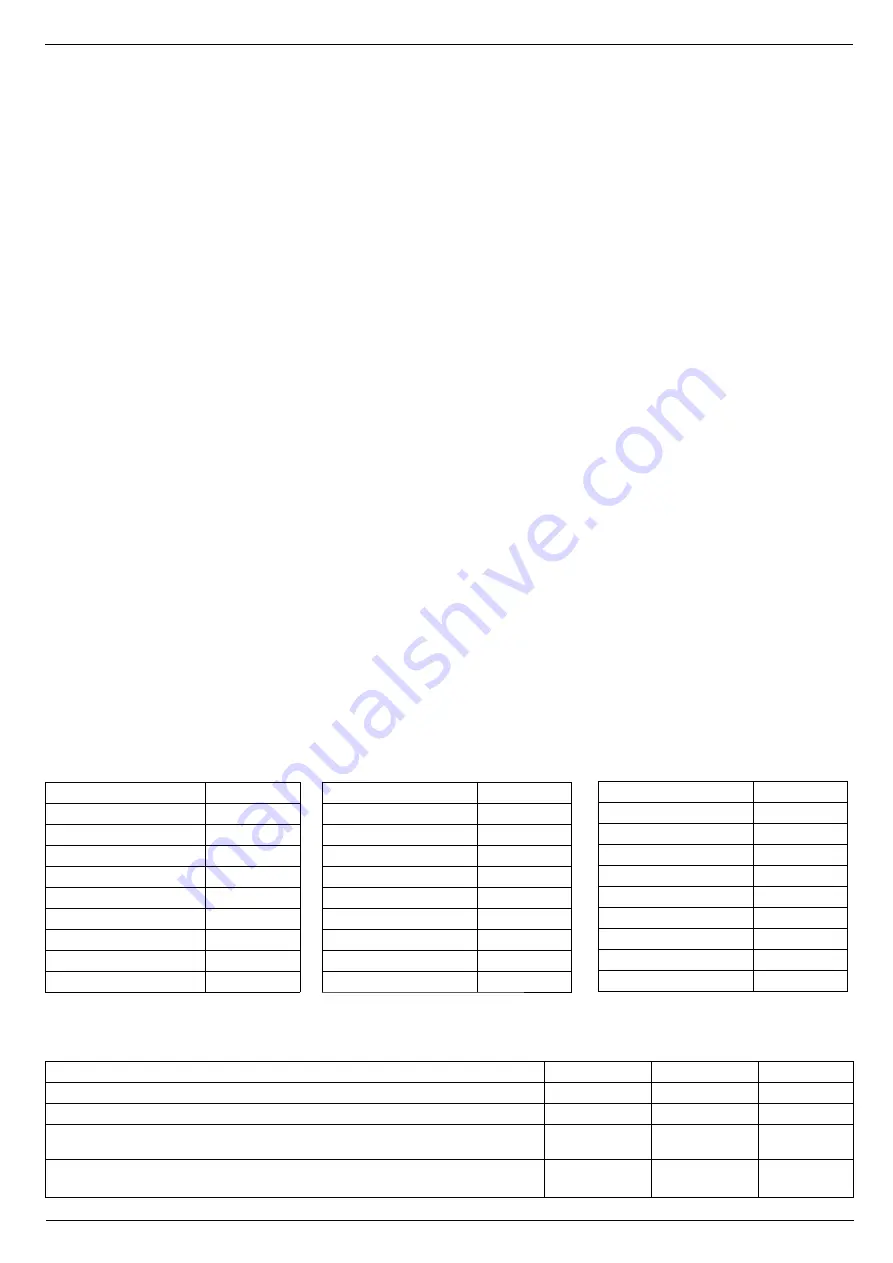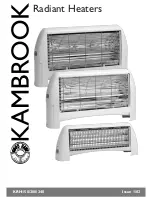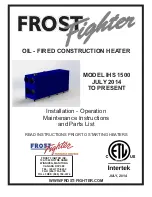
10
IT
GB
FR
I collettori solari
trasformano l’energia radiante di-
retta e diff usa del sole in energia termica (calore). A
tale scopo, la luce del sole viene captata dalla superfi -
cie dell’assorbitore.
Quest’ultima è percorsa in modo uniforme da dei
condotti attraverso i quali viene trasportato il calore.
La speciale struttura del collettore previene un’indesi-
derata cessione di calore all’ambiente.
L’accumulatore solare
ha lo scopo di conservare
l’acqua calda fi no al momento dell’utilizzo. L’accumu-
latore dovrebbe essere dimensionato in modo tale da
compensare un breve periodo di brutto tempo.
ATTENZIONE! Per le nazioni che hanno recepito
la normativa europea EN 1487:2000 il disposi-
tivo contro le sovrapressioni eventualmente in
dotazione con il prodotto non è conforme alle
normative nazionali. Il dispositivo a norma deve
avere pressione massima di 0,7 MPa (7 bar) e
comprendere almeno: un rubinetto di intercet-
tazione, una valvola di ritegno, un dispositivo di
controllo della valvola di ritegno, una valvola di
sicurezza, un dispositivo di interruzione di cari-
co idraulico.
La
struttura
semplifi ca il montaggio dei collettori.
Sono disponibili diverse tipologie in funzione dell’in-
stallazione desiderata. Le strutture fornite supportano
carichi neve pari a 667Pa e carichi vento pari a 500Pa.
Principio di funzionamento
Il
liquido termovettore
circola naturalmente per
eff etto termosifone e trasporta il calore dai collettori
all’assorbitore. Il calore viene ceduto all’acqua sani-
taria attraverso uno scambiatore di calore. Il liquido
termovettore contiene un prodotto antigelo che pro-
tegge l’impianto in inverno dai danni causati dal gelo.
È atossico, fi siologicamente innocuo e resistente alle
enormi escursioni termiche.
Il
sistema solare termico
per la produzione di acqua
calda è costituito dai seguenti componenti:
• Collettore/i solare
• Struttura
• Raccordi idraulici circuito solare
• Accumulatore solare
COLLETTORE SOLARE
Area lorda
2,20 m
2
Area di apertura
2,01 m
2
Area assorbitore
2,01 m
2
η0 *
0,74
a1 *
3,0 W/m
2
K
a2 *
0,039 W/m
2
K
2
Contenuto di fl uido
1,0 l
Pressione massima di esercizio
6 bar
Peso netto
35 Kg
Peso lordo
36 Kg
* Riferito all’area di apertura
BOLLITORE SOLARE PER IMPIANTI
A CIRCOLAZIONE NATURALE
CNA1R
CNA2R
CNA3R
Capacità circuito sanitario / Domestic water circuit capacity / Capacité circuit sanitaire
153 l
202 l
280 l
Capacità scambiatore / Exchanger capacity / Capacité échangeur
3,7 l
3,7 l
11 l
Pressione massima di esercizio lato solare / Solar side maximum rated pressure
Pression maximale d’exercice côté solaire
1,5 bar
1,5 bar
3 bar
Pressione massima di esercizio lato sanitario / Domestic water side maximum rated pressure
Pression maximale d’exercice côté sanitaire
8 bar
8 bar
8 bar
Solar collectors
convert direct and diff use radiation
from the sun into thermal energy (heat). To do this,
the absorber surface fi rst captures sunlight.
The surface is uniformly covered with conductors,
which carry away the heat. The collector is construc-
ted to reduce as much as possible the loss of heat to
the environment.
The
solar accumulator
stores the heated water until
required. The accumulator should be sized to allow for
short periods of bad weather.
WARNING! In countries where the Euopean EN
1487:2000 regulations apply, the high pressure
protection device (if supplied with the product)
does not conform to national regulations. Devi-
ces conforming to the regulations must have a
maximum pressure of 0.7 MPa (7 bar) and inclu-
de, at least: a check valve, a non-return valve, a
non-return valve control device, a safety valve
and a device to cut off the hydraulic load.
The
frame
simplifi es collector installation. Several dif-
ferent types are available, depending on the desired
installation. The structures supplied support snow lo-
ads of 667 Pa and wind loads of 500 Pa.
Operating principle
The
thermovector
liquid
circulates naturally by the
thermosiphon eff ect, carrying heat from the collec-
tors to the accumulator. The heat is then transferred to
the domestic water using a heat exchanger. The ther-
movector liquid contains an antifreeze that protects
the system from damage due to low temperatures in
winter. It is non-toxic, physiologically harmless and re-
sistant to enormous temperature variations.
The
solar heating system
for the production of hot
water includes the following components:
• Solar
collector/s
• Frame
• Hydraulic solar circuit connections
• Solar
accumulator
SOLAR COLLECTOR
Total area
2,20 m
2
Area of aperture
2,01 m
2
Area of absorber
2,01 m
2
η0 *
0,74
a1 *
3,0 W/m
2
K
a2 *
0,039 W/m
2
K
2
Fluid contained
1,0 l
Maximum rated pressure
6 bar
Net weight
35 Kg
Gross weight
36 Kg
* Related to the aperture area
SOLAR BOILER FOR
NATURAL CIRCULATION SYSTEMS
Les capteurs solaires
transforment l’énergie radian-
te directe et diff use du soleil en énergie thermique
(chaleur). À cet eff et, la lumière du soleil est captée
par la surface de l’absorbeur.
Cette dernière est uniformément parcourue de con-
duits par lesquels est acheminée la chaleur. La struc-
ture spéciale du capteur empêche la déperdition de
chaleur indésirable dans l’environnement.
L’accumulateur solaire
a pour fonction de conser-
ver l’eau chaude jusqu’à son utilisation. Il doit être di-
mensionné de sorte à compenser une courte période
de mauvais temps.
ATTENTION ! Pour les pays ayant transposé la
norme européenne EN 1487: 2000, le dispositif
contre les surpressions éventuellement fourni
avec le produit n’est pas conforme aux normes
nationales. Le dispositif aux normes doit avoir
une pression maximale de 0,7 MPa (7 bars) et
présenter au moins: un robinet de coupure, un
clapet de retenue, un dispositif de contrôle du
clapet de retenue, une soupape de sécurité, un
dispositif de coupure de charge hydraulique.
La
structure
simplifi e la pose des capteurs. Plusieurs
types sont disponibles selon l’installation souhaitée.
Les structures fournies supportent des charges de
neige égales à 667Pa et des actions du vent égales
à 500Pa.
Principe de fonctionnement
Le
fl uide caloporteur
circule naturellement par eff et
de thermosiphon et achemine la chaleur des capteurs
à l’accumulateur. La chaleur est transmise à l’eau do-
mestique par le biais d’un échangeur de chaleur. Le
fl uide caloporteur contient un produit antigel qui pro-
tège l’installation, en hiver, des dommages provoqués
par le gel. Il est atoxique, physiologiquement inoff en-
sif et résistant aux fortes amplitudes de température.
Le
système solaire thermique
de production d’eau
chaude est constitué des composants suivants:
• Capteur(s)
solaire(s)
• Structure
• Raccords hydrauliques du circuit solaire
• Accumulateur
solaire
CAPTEUR SOLAIRE
Surface brute
2,20 m
2
Surface d’ouverture
2,01 m
2
Surface absorbeur
2,01 m
2
η0 *
0,74
a1 *
3,0 W/m
2
K
a2 *
0,039 W/m
2
K
2
Contenu de fl uide
1,0 l
Pression maximale d’exercice
6 bar
Poids net
35 Kg
Poids brut
36 Kg
* Par rapport à la surface d’ouverture.
CHAUFFE-EAU SOLAIRE POUR
INSTALLATIONS À CIRCULATION NATURELLE











































